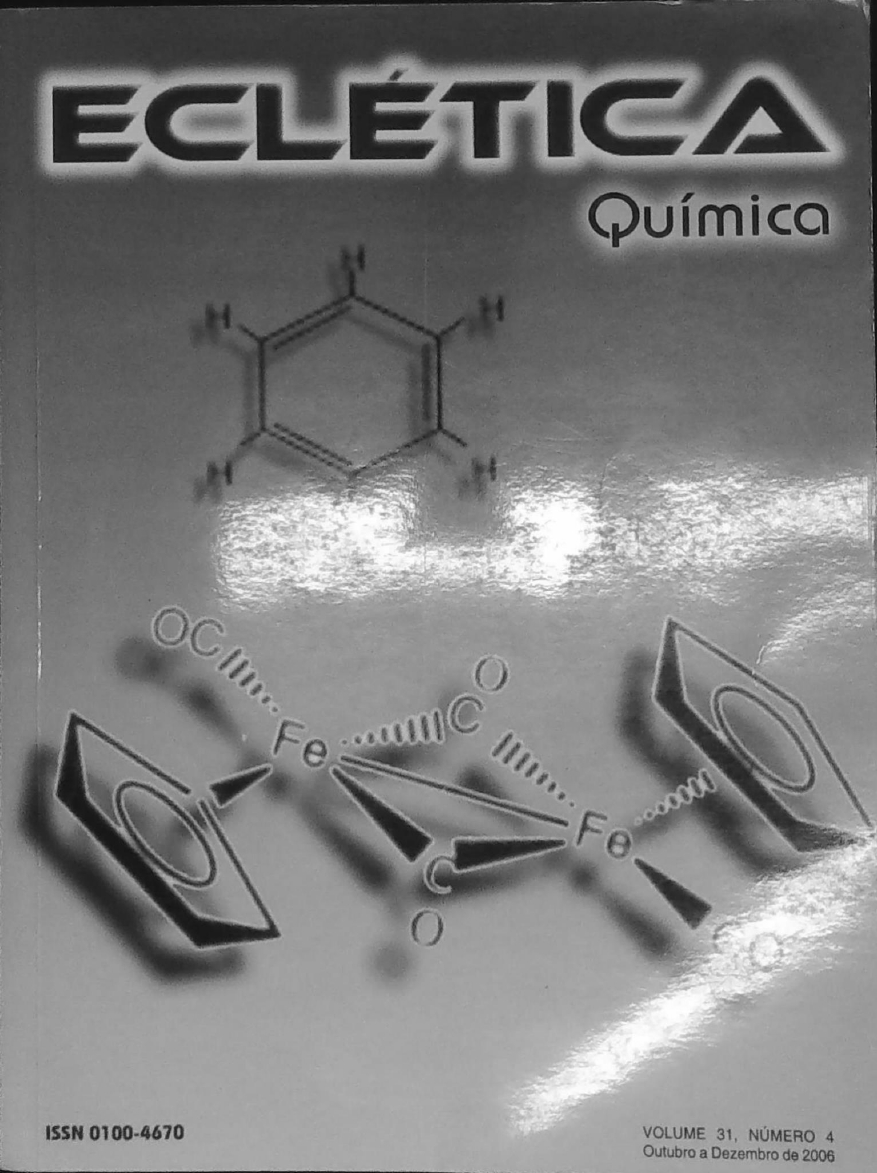Abstract
Physico-chemical properties of 3-chloro-2-nitrobenzoates of Co(II), Ni(II) and Cu(II) were synthesized and studied. The complexes were obtained as mono- and dihydrates with a metal ion to ligand ratio of 1 : 2. All analysed 3-chloro-2-nitrobenzoates are polycrystalline compounds with colours depending on the central ions: pink for Co(II), green for Ni(II) and blue for Cu(II) complexes. Their thermal decomposition was studied in the range of 293 – 523 K, because it was found that on heating in air above 523 K 3-chloro-2-nitrobenzoates decompose explosively. Hydrated complexes lose crystallization water molecules in one step and anhydrous compounds are formed. The final products of their decomposition are the oxides of the respective transition metals. From the results it appears that during dehydration process no transformation of nitro group to nitrite takes place. The solubilities of analysed complexes in water at 293 K are of the order of 10 -4 – 10 -2 mol / dm 3 .
References
A. G. Abd El Wahed, E. M. Nour, S. Teleb, and S. Fahim,
J. Therm. Anal. Cal. 76 (2004) 343.
H. Ichudak, Z. Heren, D. Ali Kose, and H. Necefoglu, J.
Therm. Anal. Cal. 76 (2004) 837.
H. Olmez, F. Arslan, and H. Ichudak, J. Therm. Anal. Cal.
(2004) 793.
Beilsteins Handbuch der organischen Chemie, Bd. IX,
Verlag van Julius Springer, Berlin, 1926.
W. Ferenc, and A. Walków-Dziewulska, J. Therm. Anal.
Cal. 63 (2001) 309.
W. Ferenc, and B. Bocian, Acta Chim. Hung. 137 (2000)
W. Ferenc, and B. Bocian, J. Therm. Anal. Cal. 62 (2000) 831.
W. Ferenc, B. Bocian, and B. Czajka, Acta Chim. Hung.
(2000) 659.
B. Bocian, B. Czajka, and W. Ferenc, J. Therm. Anal. Cal.
(2001) 729.
B. Czajka, B. Bocian, and W. Ferenc, J. Therm. Anal.
Cal. 67 (2002) 631.
B. Bocian, W. Ferenc, J. Serb. Chem. Soc. 8-9 (2002) 605.
W. Ferenc, and B. Bocian, J. Therm. Anal. Cal. 74 (2004)
B. N. Figgs, and R. S Nyholm, J. Chem. Soc. (1958) 4190.
E. König, Magnetic Properties of Coordination and
Organometallic Transition Metal Compounds, Springer
Verlag, Berlin, 1966.
K. Nakamoto, Infrared and Raman Spectra of Inorganic
and Coordination Compounds, John Wiley and Sons, New
York, 1997.
A. K Bridson, Inorganic Spectroscopic Methods, Oxford
University Press, New York, 1998.
L. H. Harwood, and P. J McCarthy, Spectroscopy and
Structure of Metal Chelate Compounds, John Wiley and Sons,
New York, 1968.
N. L. Alpert, W. E. Keiser, and H. A. Szymanski, Infrared
Spectroscopy, Polish Scientific Publisher, Warsaw, 1974.
R. C. Mehrotra and R. Bohra, Metal Carboxylates,
Academic Press, London, 1983.
B. S. Manhas, A. K. Trikha, J. Indian Chem. Soc. 59
(1982) 315.
I. N. Kukuszkin, Koord. Chim. 4 (1972) 1170.
D. L. M. Goodgame and M. A. Hitchman, Inorg. Chem.
(1967) 813.
W. W. Fee, C. S. Gamer, and I. N. Harrowfield, Inorg.
Chem. 6 (1967) 1.
Z. Bojarski, and E. Lagiewka, Structural X-Ray
Analysis, Polish Scientific Publisher, Warsaw, 1988.
W. Ferenc, B. Bocian, and K. Kunka, Indian J. Chem. 38
A (1999) 740.
W. Ferenc and B. Bocian, J. Serb. Chem. Soc. 64 (1999)
D. N. Todor, Thermal Analysis of Minerals, Abacus
Press, Tunbridge Wells, Kent, 1976.
F. Paulik, Special Trends in Thermal Analysis, Wiley,
Chichester, 1995.
A. V. Nikolaev, V. A. Logvinienko, and L. I. Myachina,
Thermal Analysis, Vol. 2, Academic Press, New York, 1989.
K. Burger, Coordination Chemistry: Experimental
Methods, Akadèmiai Kiadó, Budapest, 1973.
́
J. Mrozinski,
M. Janik, and T. Nowakowski, Zeszyty
́
Naukowe Politechniki Slaskiej,
(1988) 125.(in Polish)
A., Earnshaw, Introduction to Magnetochemistry,
Academic Press, London, 1956.
C. O’Connor, Progress in Inorganic Chemistry, Wiley,
New York, 1982.
F. A. Keetle, Inorganic Physical Chemistry, Polish
Scientific Publisher, Warsaw, 1999.
E. Kokot, and R. L. Martin, Inorg. Chem. 3 (1964) 1306.
B. N. Figgis, and R. L. Martin, J. Chem. Soc. (1956)
C. C. Hadjikostas, G. A. Katsoulos, M. P. Sigalas, C. A
́
Tsipis and J. Mrozinski,
Inorg. Chim. Acta, 167 (1990) 165.
J. Casanova, G. Alznet, J. Latorre, and J. Borras, Inorg.
Chem. 36 (1997) 2052.
O. Kahn, Angew. Chem., Int. Ed. Engl. 24 (1985) 834.

This work is licensed under a Creative Commons Attribution 4.0 International License.
Copyright (c) 2018 Eclética Química Journal




